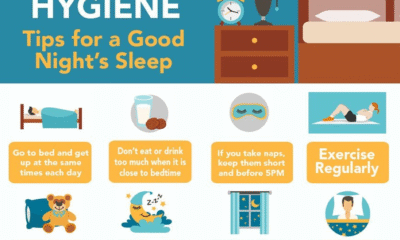BUSINESS
Ed Miliband Hints at Cut to VAT on Energy Bills
Introduction
In a recent statement that has stirred political and economic discussions across the UK, Ed Miliband hints at a cut to VAT on energy bills, a move that could bring relief to millions of struggling households. As energy prices remain high and the cost-of-living crisis continues, this potential policy shift reflects the government’s growing focus on affordability and sustainability.
Why a VAT Cut on Energy Bills Matters
Currently, energy bills in the UK include a 5% Value Added Tax (VAT) — a standard rate applied to gas and electricity for domestic use. Cutting or removing this tax could significantly household expenses, especially for low-income families and pensioners facing record-high winter costs.
A VAT reduction could mean:
-
Cheaper household energy costs during colder months.
-
Boosted consumer spending in other essential areas.
-
Reduced inflationary pressure on overall living costs.
Ed Miliband’s Position on Energy Reform
As Shadow Secretary of State for Energy Security and Net Zero, Ed Miliband has long advocated for cleaner, fairer, and more affordable energy. His latest comments on the possible VAT cut align with Labour’s broader commitment to tackling fuel poverty and accelerating the UK’s transition to green energy.
Miliband emphasized that “families deserve a fair deal,” suggesting that temporary VAT relief could help manage bills while renewable investments continue to grow.
Political and Economic Reactions
Economists and political analysts have responded with mixed opinions:
-
Supporters argue that reducing VAT is a direct and effective way to provide relief to struggling households.
-
Critics, however, warn that it could reduce government revenue needed for energy-transition investments.
Energy companies and consumer advocacy groups have also urged policymakers to pair any VAT cuts with long-term reforms in renewable infrastructure and home insulation.
How It Could Affect Consumers
If implemented, a VAT cut on energy bills could save an average UK household £60–£100 per year, depending on usage and tariff type. While the amount may seem modest, it could provide much-needed breathing space for families already burdened by high mortgage rates and food inflation.
In addition, lower energy prices could help:
-
Reduce debt accumulation from unpaid bills.
-
Encourage energy efficiency through consumer confidence.
-
Boost public support for sustainable energy initiatives.
Looking Ahead: The Future of UK Energy Policy
Whether the VAT cut becomes reality will depend on upcoming fiscal decisions and political negotiations. However, Ed Miliband’s statement underscores a renewed focus on energy fairness and climate-friendly reform.
For now, households can expect continued debate — and potential relief — as the government explores ways to balance economic stability, climate goals, and social equity.
Conclusion
Ed Miliband’s hint at a cut to VAT on energy bills signals a major development in the UK’s energy policy landscape. If implemented, it could ease financial pressure for millions while supporting a fairer energy system. As the UK navigates its path toward net zero, measures like these could define the future of affordable and sustainable energy.
BUSINESS
Productivity Downgrade May Add £20 Billion to Budget Hole
Introduction
A significant financial warning has emerged for the UK economy: the Office for Budget Responsibility (OBR) is expected to downgrade its forecast for productivity growth by around 0.3 percentage points — a move that could widen the country’s budget gap by more than £20 billion. The Guardian+3Financial Times+3Bloomberg+3
In this article we’ll examine what productivity means in this context; why this downgrade matters; how it leads to a large fiscal hole; what it means for public finances, tax and spending; and what steps might be taken to respond.
What is productivity and why does it matter?
In macro-economic terms, productivity commonly refers to output per unit of input — for example, how much a worker produces (or how much output is generated) per hour worked. When productivity growth is strong, the economy tends to grow faster, incomes can rise, tax receipts increase and public borrowing is more manageable.
For the UK, the OBR’s forecast of trend productivity growth feeds into its model for GDP, tax revenues, public spending and borrowing. If productivity growth is revised downwards, that means future tax receipts will be lower (because less output, less income), and borrowing needs may rise to plug the gap.
In the UK context, the OBR is reportedly considering cutting its productivity growth forecast by about 0.3 percentage points. Bloomberg+2Financial Times+2 Economists estimate that each 0.1 percentage point cut in productivity can add around £7 billion to annual public sector borrowing by 2029-30. Financial Times+1
The scale of the fiscal hit: £20 billion and beyond
Here’s how the numbers add up:
-
The OBR is expected to lower its productivity growth assumption by ~0.3 percentage points. Financial Times+2Bloomberg+2
-
Based on analyses by the Institute for Fiscal Studies (IFS) and others, a 0.1 point downward revision is estimated to cost about £7 billion in borrowing. Multiplying that by three gives ~£21 billion. Financial Times+1
-
Some forecasts suggest the total budget “hole” caused by the downgrade could range between £20 billion and £30 billion (or possibly more when combined with other risks). Financial Times+2Reuters+2
-
Previously, the Chancellor had only around £9.9 billion of head-room against her key fiscal rule (which requires day-to-day spending to be covered by tax revenues by 2029-30). The productivity downgrade risks wiping out that flexibility. Financial Times
In short: if productivity growth is weaker than assumed, the government may have to either raise taxes, cut spending, borrow more (or some combination) to plug the gap.
Why is the productivity revision coming?
Several underlying factors explain why the OBR might revise its forecast down:
-
The UK has experienced persistently weak productivity growth since the 2008 financial crisis, which continues to weigh on the outlook. The Times+1
-
The OBR itself has acknowledged it has been too optimistic in past productivity forecasts. Reuters
-
External pressures — such as Brexit, investment weakness, global trade tensions, inflation, and uncertainty in business investment — all contribute to a bleaker productivity environment. The Financial Times reported that the Chancellor said productivity has been “very poor” since the financial crash and Brexit. Financial Times
-
Migration, workforce, supply-side constraints and investment in technology and skills are also contributing to the weaker picture. The Guardian
Implications for public finances, tax and spending
Given the downgrade, here are the immediate consequences for the government and public finances:
1. Tax revenues under pressure
Lower productivity means lower output, lower incomes and potentially weaker business profits — all of which translate into less tax revenue. The Chancellor may need to raise taxes or extend tax-threshold freezes to raise additional revenue. For example, a 1p increase in the basic rate of income tax would generate over £8 billion annually according to HM Revenue & Customs estimates. Financial Times
2. Increased borrowing or spending cuts
To maintain spending levels with weaker revenue, borrowing may increase. But the government is committed to fiscal rules that aim to stabilise or reduce debt over time — meaning that spending cuts may also become unavoidable if tax rises are politically unpalatable.
3. Erosion of budget head-room
As noted, the Chancellor has limited “buffer” built in. With the productivity downgrade, that buffer may evaporate, leaving little margin for other shocks (e.g., higher interest costs, welfare pressures). The Guardian+1
4. Political and policy risks
Increased tax burdens or cuts to popular public services can be politically risky. The Chancellor may have to rethink assumptions made in the budget, and there may be pressure on public investment plans. There’s also the danger that further productivity disappointments lead to yet more fiscal tightening, which could hamper growth further—a negative feedback loop.
What can be done to mitigate the risk?
Fortunately, a productivity shortfall doesn’t have to mean doom. Some strategies and policy responses could help mitigate or reverse the trend:
-
Structural reforms: Improving business investment, digital adoption, workplace innovation, skills and training can help raise productivity over time. The government is reportedly preparing reforms around planning, taxation and red tape to stimulate growth. Financial Times
-
Targeted investment: Infrastructure, R&D, and support for higher-productivity sectors can help raise trend output.
-
Tax policy alignment: Designing tax reforms that incentivise investment, innovation, and labour market flexibility can help boost long-term productivity.
-
Realistic forecasting and contingency planning: The government must plan for downside scenarios – if productivity growth doesn’t quickly improve, fiscal plans need to be resilient.
-
Balancing short-term and long-term priorities: While plugging the budget gap is vital, ensuring that spending on growth-enabling areas is not undermined is equally important. Cutting investment for an immediate fix may hamper future productivity.
Conclusion
The anticipated productivity downgrade by the OBR — of roughly 0.3 percentage points — could add more than £20 billion to the UK’s budget hole. This poses a serious challenge for the Chancellor, with implications for tax policy, spending decisions and long‐term economic growth.
The situation highlights the close connection between productivity growth and public finances: weak productivity not only hurts living standards and competitiveness but also places pressure on the government’s ability to fund public services and meet fiscal targets.
Moving forward, the focus must not only be on plugging the immediate fiscal gap, but on raising productivity so the economy’s growth path supports sustainable public finances. Policymakers will have to navigate the delicate balance between short-term fiscal discipline and long-term growth-oriented investment.
BUSINESS
Social Media Marketing Tips for Small Business:

Why Social Media Marketing Matters for Small Businesses
In today’s digital age, social media marketing is no longer optional — it’s essential. Platforms like Instagram, Facebook, TikTok, and LinkedIn give small businesses the power to reach thousands of potential customers without spending a fortune.
Whether you’re a local café, startup, or service-based brand, using the right social media marketing strategies can help you:
-
Build brand awareness
-
Increase engagement and trust
-
Drive website traffic
-
Boost sales and conversions
Let’s explore the most effective topic.
💡 1. Choose the Right Social Media Platforms
Not every platform fits every business. Instead of trying to be everywhere, focus on where your audience hangs out.
| Platform | Best For | Content Type |
|---|---|---|
| Lifestyle, fashion, food | Photos, Reels, Stories | |
| Local businesses, communities | Posts, events, ads | |
| B2B, professionals | Articles, networking | |
| TikTok | Younger audiences | Short, creative videos |
| DIY, design, recipes | Images, infographics |
👉 Pro Tip: Use analytics tools like Meta Business Suite or Later.com to see which platform drives the most engagement.
🧠 2. Create a Content Strategy (Not Random Posts)
The biggest mistake small businesses make? Posting without a plan.
Build a content calendar with clear goals for each post: educate, entertain, or inspire. Include:
-
Brand stories (how your business started)
-
Customer testimonials
-
Behind-the-scenes videos
-
Product demos or tutorials
Consistency is key — post regularly, even if it’s just 3–4 times per week.
🎯 3. Use Hashtags Strategically
Hashtags make your content discoverable
-
Use 3–5 targeted hashtags per post (avoid spamming).
-
Mix broad ones (#SmallBusiness, #MarketingTips) with niche ones (#BakeryMarketing, #LocalBusinessGrowth).
-
Research what your competitors use.
💬 Example: A local bakery could use: #SmallBusinessMarketing #LocalBakery #FoodieLife #SupportLocal
💬 4. Engage With Your Audience Daily
Social media isn’t just for posting — it’s for conversation.
-
Reply to comments and DMs promptly.
-
Thank your customers for mentions or reviews.
-
Join discussions in your niche using relevant hashtags.
✨ Pro Tip: The more you engage, the more your visibility increases due to platform algorithms.
📸 5. Focus on Visual Storytelling
Visual content gets 94% more engagement than text-only posts.
Invest time in:
-
High-quality product photos
-
Short videos and Reels
-
Eye-catching graphics (use Canva or Adobe Express)
Try adding text overlays or your logo for consistent branding.
📈 6. Run Small but Smart Paid Campaigns
You don’t need a big budget to advertise. Platforms like Facebook Ads and Instagram Boosted Posts allow you to start with as little as $5/day.
Start small and target:
-
Local audiences
-
Users with interests similar to your niche
-
People who’ve engaged with your posts before
💰 Pro Tip: Always track ROI. Focus on campaigns that drive sales or email sign-ups, not just likes.
🧩 7. Collaborate With Micro-Influencers
Partnering with small influencers (1K–50K followers) can give your brand authentic exposure.
-
Choose influencers who genuinely align with your brand values.
-
Offer free products or small payments.
-
Track engagement metrics after collaboration.
Micro-influencers often drive better conversion rates than big celebrities — especially for local businesses.
🕒 8. Analyze Your Results & Adjust
Use built-in analytics tools like:
-
Instagram Insights
-
Facebook Page Analytics
-
Google Analytics for link tracking
Check which content performs best — and double down on what works.
Metrics to track:
-
Engagement rate
-
Reach and impressions
-
Click-through rate (CTR)
-
Follower growth
💬 9. Leverage User-Generated Content (UGC)
Encourage your customers to share photos or stories using your product.
-
Run hashtag challenges.
-
Feature customer posts on your page.
-
Offer small discounts for tagged content.
UGC builds trust and community, turning followers into loyal fans.
⚙️ 10. Stay Consistent and Authentic
Your audience wants to connect with real people, not faceless brands.
Show your team, share your story, and post regularly.
Authenticity drives long-term relationships, which is the foundation of small business success.
🏁 Final Thoughts
Social media success doesn’t happen overnight — it’s built through consistency, creativity, and connection.
By following these social media marketing tips for small business, you can grow your online presence, attract loyal customers, and boost your sales — all while staying within budget.
Start small, post with purpose, and watch your brand thrive in 2025 and beyond.
BUSINESS
How to Start Investing With Little Money: Smart Beginner’s Guide 2026

Why You Don’t Need a Lot of Money to Start Investing
How to Start Investing With Little Money: A common myth is that investing is only for the rich. The truth? Anyone can start investing — even with as little as $10 or less.
Thanks to today’s digital tools, fractional shares, and micro-investing apps, you can build wealth gradually without needing a large lump sum. The key is to start early, stay consistent, and make smart, informed choices.
📊 Step-by-Step: How to Start Investing With Little Money
Let’s break down exactly how you can start investing even if you’re on a tight budget.
1. Set Clear Financial Goals
Before investing, define what you want to achieve:
-
Build an emergency fund?
-
Save for retirement?
-
Grow passive income?
Having goals helps you choose the right investment options and risk level.
Tip: Start small — aim to save at least 10% of your monthly income for investing.
2. Build a Safety Net First
Before putting your money in the market, make sure you have:
-
Emergency fund: 3–6 months of living expenses
-
No high-interest debt: Pay off credit cards or personal loans first
This creates a financial cushion, so you won’t have to withdraw investments early.
3. Choose the Right Investment Platform
You don’t need a stockbroker anymore. Today, anyone can invest using easy-to-use apps and platforms such as:
-
Robinhood (US)
-
eToro or Interactive Brokers (global)
-
M1 Finance
-
Acorns or Stash for micro-investing
These let you buy fractional shares, meaning you can invest in big companies like Apple or Tesla with just a few dollars.
4. Start With Low-Cost Investments
When you’re starting with little money, focus on low-fee, diversified options:
-
ETFs (Exchange-Traded Funds): Invest in a basket of stocks at once.
-
Index Funds: Track market performance (like the S&P 500).
-
REITs (Real Estate Investment Trusts): Invest in real estate without buying property.
💡 Example: Investing $50 per month in an S&P 500 ETF could grow to over $10,000 in 10 years, assuming average market returns.
5. Automate Your Investments
Consistency matters more than size. Set up automatic monthly deposits into your investment account — even $20–$50 a month adds up.
This approach, called dollar-cost averaging, reduces risk by spreading purchases over time.
6. Diversify Your Portfolio
Don’t put all your money into one stock. Spread investments across:
-
Stocks
-
Bonds
-
Index Funds
-
Real Estate ETFs
Diversification helps protect your money during market ups and downs.
7. Keep Learning and Stay Patient
Investing is a long-term journey, not a get-rich-quick scheme.
Follow reliable finance blogs, YouTube channels, or books like “The Little Book of Common Sense Investing” by John C. Bogle.
Stay consistent — even small, regular investments grow significantly over time through compound interest.
💡 Example: Investing $25 a Week
If you invest $25 a week at a 7% annual return:
-
1 year → $1,300
-
5 years → $7,600
-
10 years → $18,700
It’s not magic — it’s math and consistency.
⚠️ Common Mistakes to Avoid
-
Trying to time the market
-
Investing without research
-
Ignoring fees and taxes
-
Withdrawing too soon
-
Not diversifying
Avoid these pitfalls to maximize returns and minimize risk.
🏆 Best Apps to Start Investing With Little Money
| App | Minimum Investment | Best For |
|---|---|---|
| Acorns | $5 | Automatic investing & round-ups |
| Robinhood | $1 | Fractional shares & stocks |
| Stash | $5 | Beginner investors |
| Public | $1 | Social investing |
| Fidelity | $0 | Traditional investing platform |
💬 Final Thoughts: Start Small, Think Big
You don’t need thousands of dollars to start — you just need the discipline to begin.
Start today, even if it’s only $10 a week. The earlier you start, the more your money can grow through the power of compound interest.
-

 BUSINESS2 months ago
BUSINESS2 months agoLufanest: Redefining Leadership Through Purpose and Impact
-

 BLOG2 months ago
BLOG2 months agoMyGreenBucks.net: Proven Path to Financial Freedom
-

 BLOG2 months ago
BLOG2 months agoTrulife Distribution Lawsuit: Key Facts, Allegations & Implications
-

 BLOG2 months ago
BLOG2 months agoAnheihe: Meaning, Origin, and Modern Significance
-

 BUSINESS2 months ago
BUSINESS2 months agoSocial Media Marketing Tips for Small Business:
-

 BLOG2 months ago
BLOG2 months agoUrdu Poetry for “far from home” people: دلوں کو چھو لینے والی شاعری پردیسوں کے نام
-

 HEALTH2 months ago
HEALTH2 months agoSleep Hygiene Bio-Hack Rituals: The Science of Better Sleep
-

 BLOG2 months ago
BLOG2 months agoCassasse: The Caribbean Dish You Need to Try
